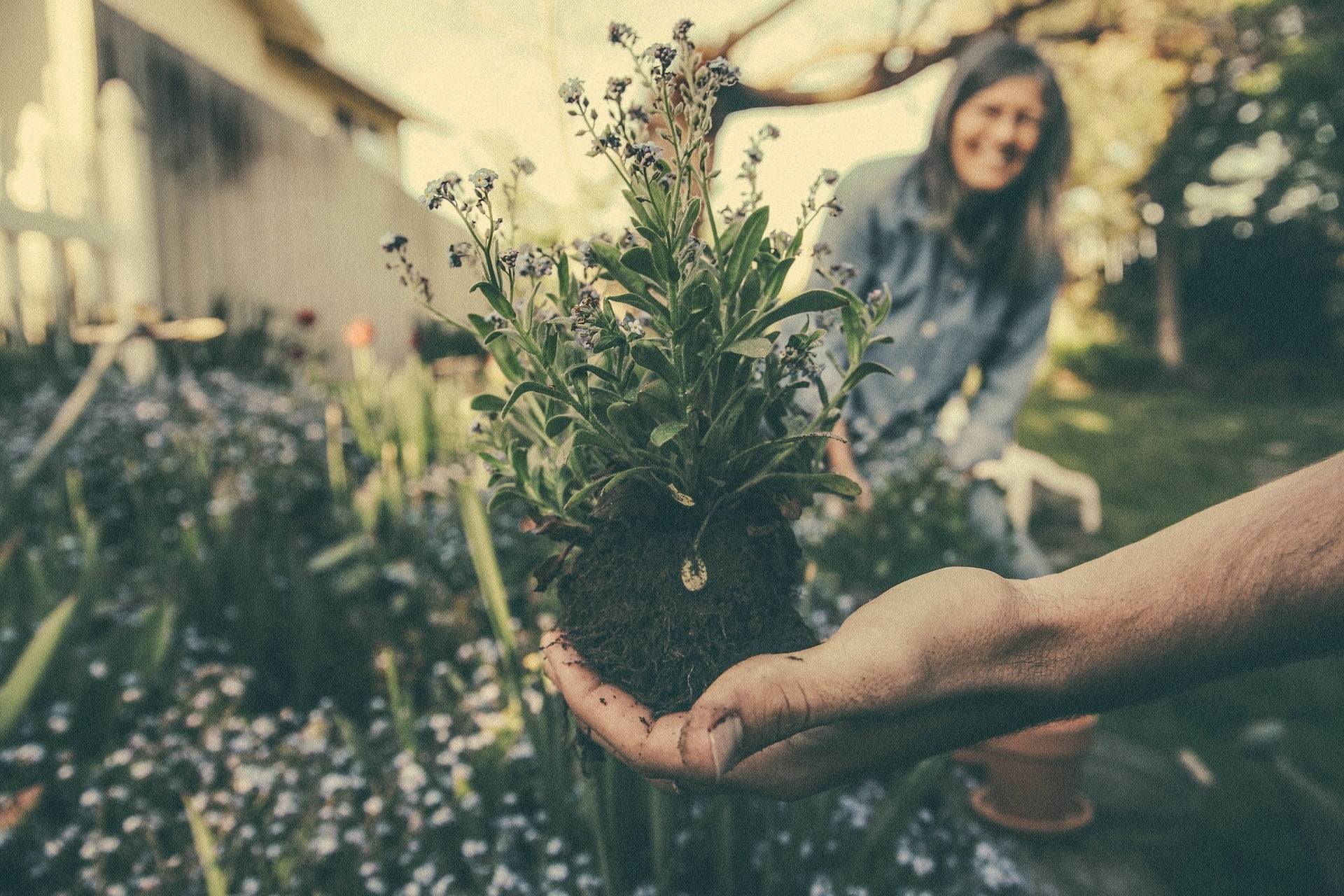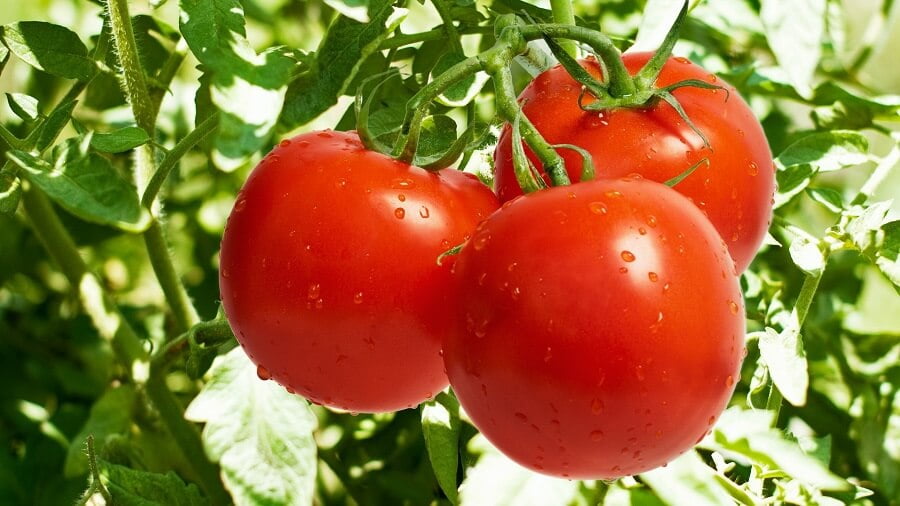Selecting Cold-Hardy Varieties
Selecting the right winter vegetables is crucial for a successful and hearty harvest. Some veggies can handle cold temperatures better than others, so it’s important to choose varieties that are known for their cold-hardiness. When you’re looking at seed packets or nursery plants, keep an eye out for terms like ‘cold-tolerant’ or ‘frost-resistant.’ These phrases indicate that the plant will be able to survive in lower temperatures and give you a bountiful harvest even during the chilly winter months. A few great options for cold-hardy vegetables include kale, spinach, carrots, and Brussels sprouts. Kale is especially tough when it comes to withstanding frosty weather – its flavor actually improves after being exposed to colder temperatures! Spinach also thrives in cooler conditions and can often bounce back from light frosts without any damage. Carrots and Brussels sprouts are both root vegetables that grow well throughout the winter season; just make sure to protect them with mulch if heavy frost is expected. When planting your winter garden, don’t forget about garlic and onions too. Both of these flavorful alliums do best when planted in late fall, allowing them time to establish strong roots before going dormant during the coldest part of the year. Then they’ll burst into new growth as soon as spring arrives! By selecting appropriate varieties and providing proper care, your winter vegetable garden will reward you with fresh produce even on the chilliest days – ensuring a warm sense of accomplishment while keeping your family nourished during those long winter months.Preparing The Soil For Cooler Temperatures
Imagine your garden as a cozy, warm bed on a chilly winter’s night. Your vegetables are the ones snuggling under the covers, and it’s up to you to provide them with the best environment possible to keep them comfortable and thriving in cooler temperatures. Preparing the soil for these winter crops is like tucking them in at bedtime – essential for their growth and development. To create this safe haven for your veggies, here are some key steps to follow:- Add organic matter: Incorporate well-composted materials or aged manure into your soil before planting. This will not only help retain moisture but also add valuable nutrients that will nourish your plants throughout the season.
- Check pH levels: Winter crops often prefer slightly acidic soil conditions. Test your soil using an inexpensive kit from a local gardening store, and if necessary, adjust accordingly by adding lime (to raise pH) or sulfur (to lower pH).
- Loosen compacted earth: Use a broadfork or tiller to break up any hard-packed areas of soil so that plant roots can easily penetrate and spread out.
- Mulch generously: A thick layer of organic mulch around your plants helps regulate temperature fluctuations, conserves water, suppresses weeds, and provides additional nutrients as it breaks down over time.
Protecting Your Plants From Frost
As winter approaches, it’s essential to prepare your garden for the cold weather that comes with it. One of the biggest challenges you may face is protecting your plants from frost damage. Frost can be harmful to many vegetables and can seriously affect their growth or even kill them outright. But don’t worry! We have some tips on how to protect your winter vegetable garden and ensure a bountiful harvest. Firstly, keep an eye on the weather forecast. If freezing temperatures are coming, take action by covering your vulnerable plants with a layer of insulating material such as old blankets, sheets, or burlap sacks. This will help trap heat around the plant and prevent frost from settling directly onto its leaves or stems. Remember to remove these covers during warmer daytime hours so that sunlight can reach your plants, allowing them to continue growing safely. One more way to safeguard your precious veggies is through a technique called ‘hilling.’ In this method, you pile soil up around the base of each plant in order to provide extra insulation against chilly temperatures. Hilling works best for root vegetables like carrots and potatoes but could also benefit other types of produce as well. Just make sure not to bury any leaves beneath the soil since they need access to light for photosynthesis! With these protective measures in place, you’ll be able to enjoy a delicious and healthy harvest all winter long without having to stress about frost ruining your hard work.Brussels Sprouts: A Winter Favorite
Have you ever tried growing Brussels sprouts in your winter garden? If not, let us tell you why they should be at the top of your list! Not only are these tasty little veggies packed with vitamins and minerals, but they’re also super easy to grow during the colder months. In fact, their flavor gets even better after a few frosty nights. So let’s explore how to plant and care for Brussels sprouts so that you can enjoy a hearty harvest this winter. First things first, it’s important to choose the right variety for your region. There are many types of Brussels sprouts available, each with its own unique flavors and growth habits. One popular choice is ‘Long Island Improved’, which has been around since the 1800s and is known for being cold-hardy and high-yielding. Another favorite is ‘Churchill’, an early-maturing variety that produces tender green sprouts quickly. It’s always best to check with local nurseries or gardening clubs for advice on which varieties will thrive in your area. Now that you’ve chosen the perfect type of Brussels sprout for your garden, it’s time to get planting! Start by picking a sunny spot with well-draining soil – these plants love sunshine but don’t want soggy feet. Plant seeds about one-half inch deep and two inches apart in rows spaced three feet apart from each other. Keep an eye out for pests like aphids and cabbage worms as they can cause damage if left unchecked. To protect against harsh weather conditions such as heavy snowfall or freezing temperatures, consider using row covers or cloches over your plants until they become strong enough to withstand the elements on their own. You’ll know your patience has paid off when you start seeing those delicious little sprouts appear just before spring arrives!Growing Nutritious Kale
Growing nutritious kale in your winter garden is a fantastic idea! Kale is not only packed with vitamins and minerals, but it’s also one of the hardiest vegetables around. This means that it can withstand harsh weather conditions like frost, making it perfect for planting during the colder months. To start growing kale, begin by selecting a suitable location in your garden. Look for an area that gets at least six hours of sunlight per day, as this will help your plants to grow strong and healthy. When preparing the soil, mix in plenty of organic matter such as compost or aged manure. This will provide essential nutrients to support growth while improving drainage and water retention in the soil. Once you’ve prepared the ground, plant your kale seeds about half an inch deep and 12-18 inches apart, depending on the variety you choose. As your kale starts to grow, there are several ways you can ensure its health and success throughout the season. Firstly, keep an eye out for pests such as aphids or cabbage worms; these critters love munching on tender leaves! You can use insecticidal soap or neem oil to deter them from causing damage to your plants. Watering is another crucial aspect when caring for kale – make sure that you give them enough moisture without overdoing it since soggy roots could lead to disease problems down the line. And don’t forget about weeding: keeping nearby weeds under control will allow your kale plants more space and access to vital nutrients they need for optimal growth. By following these tips, you’ll be well on your way to enjoying a bountiful harvest of delicious winter greens!Cultivating Carrots In Cold Weather
Are you ready to embrace the challenge of cultivating carrots in cold weather? Fear not, for we have some stellar tips and techniques that will help you grow a bountiful crop. With the right knowledge, growing carrots in winter can be an incredibly rewarding experience. To ensure your carrot plants thrive during those chilly months, consider these essential factors:- Soil preparation: Properly preparing your garden bed is crucial for successful growth. Make sure to loosen the soil at least 12 inches deep and mix in compost or other organic matter. This allows the roots to penetrate easily and helps retain moisture.
- Choosing the right variety: Some carrot varieties are better suited for cold weather than others. Opt for types like ‘Nantes’ or ‘Danvers,’ which are known for their hardiness and resistance to frost.
- Timing is key: Plant your seeds about two to four weeks before your region’s average first frost date. This gives them ample time to germinate before temperatures drop too low.
Tips For Planting Garlic
Now that we’ve talked about some general tips for planting winter vegetables, let’s focus on a specific one: garlic. Garlic is not only delicious and versatile in the kitchen but also has several health benefits like boosting immunity and reducing inflammation. Plus, it can be planted during fall or early winter months to ensure a bountiful harvest come springtime. So here are some essential pointers for getting your garlic crop off to a great start! First things first, you’ll want to choose the right variety of garlic for your garden before planting. There are two main types: softneck and hardneck. Softneck garlic grows well in mild climates, while hardneck varieties thrive in colder regions with harsh winters. After selecting the appropriate type for your area, make sure to purchase healthy bulbs from a reputable source. Avoid using grocery store garlic as these may have been treated with chemicals or might carry diseases that could affect your crop. The next step is preparing your soil and planting the cloves properly; this will help keep them safe throughout their growth cycle until they’re ready to harvest. Start by loosening the soil at least 12 inches deep and adding compost or organic matter to improve fertility and drainage – remember, garlic loves well-draining soil! Next, separate individual cloves from the bulb without removing their papery skins (these protect them against rot). Plant each clove pointy end up and approximately 2-4 inches deep, spacing them around 6 inches apart within rows separated by about 18 inches. Cover them back up with soil, water gently yet thoroughly, then sit back and wait patiently for those green shoots to emerge above ground level when warmer weather arrives!Spinach: A Hardy Leafy Green
A symphony of colors and flavors, spinach is a robust addition to any winter vegetable garden. This hearty leafy green can withstand the harshest cold snaps and continue to flourish, providing you with a bountiful harvest even in the frostiest months. Its versatility in recipes ranging from salads to stews makes it an ideal choice for those seeking comfort amidst the chill. To ensure your spinach plants thrive throughout winter, follow these tips:- Choose appropriate varieties:
- Winter Giant: known for its large leaves and tolerance to cooler temperatures.
- Bloomsdale Long Standing: resilient against bolting and well-suited for colder weather.
- Tyee F1 Hybrid: excellent resistance to disease and tolerates low-light conditions.
Swiss Chard: A Versatile Winter Crop
Moving on from spinach, another great winter vegetable to consider planting is Swiss chard. This versatile and colorful crop can withstand colder temperatures while providing you with a bountiful harvest throughout the season. Swiss chard is an excellent choice for your winter garden because it’s not only cold-hardy but also packed with nutrients. It comes in various colors like red, yellow, green, and even rainbow – making it visually appealing as well. To plant Swiss chard, follow these simple steps: first, sow seeds directly into the soil about 2-4 weeks before the last expected frost date or start them indoors if you want a headstart. Space your rows about 18 inches apart and cover seeds lightly with soil. Once seedlings have emerged and are a few inches tall, thin plants to around 12 inches apart so they have enough room to grow big and healthy leaves. As the weather gets colder outside, there’s no need to worry about your Swiss chard suffering too much damage. These resilient plants will continue growing despite chilly temperatures! Make sure to provide plenty of water during dry spells since moist soil helps insulate roots against freezing conditions. And don’t forget that one of the best parts about growing Swiss chard is its ability to be harvested multiple times; simply cut off outer leaves when needed for cooking or salads, leaving inner ones intact so new growth can take place. With proper care and attention, this amazing winter vegetable will reward you with tasty greens all season long!Can Winter Vegetables Survive in the Same Conditions as Annuals?
Winter vegetables are hardy crops that can withstand low temperatures, but their ability to survive varies compared to annuals. Unlike winter vegetables, which are specifically adapted to grow in cold weather, annuals tend to struggle in harsh winter conditions. So, keeping annuals alive in winter may require extra care, such as protecting them with coverings or bringing them indoors.
Broccoli: A Cool-Season Staple
Oh, the irony! Just when you thought that broccoli was only meant to be enjoyed in warm months, we’re here to tell you otherwise. It turns out this green veggie thrives in cooler temperatures and can even handle a light frost. So if you want your garden to keep producing throughout the winter season, don’t shy away from planting some broccoli. Growing broccoli during the colder months might seem like a daunting task, but it’s actually quite simple with proper planning and care. First off, choose an appropriate variety for your region – there are plenty of cold-hardy options available such as ‘Calabrese’, ‘Purple Sprouting’, or ‘Romanesco’. Once you’ve got that settled, plant your seeds indoors several weeks before transplanting them outside so they have time to grow strong roots. And remember: just because it’s cold doesn’t mean you can neglect watering and fertilizing – these tasks remain crucial for maintaining healthy plants. So next time someone tells you that the growing season is over when winter arrives, surprise them by proudly displaying your robust broccoli harvest. Not only will you enjoy fresh vegetables throughout those chilly months, but also gain a sense of safety knowing nature hasn’t won against your green thumb after all. With patience and dedication, anyone can transform their garden into a year-round source of nourishment – now go ahead and start planting those cool-season staples!Peas: Thriving In Lower Temperatures
Peas are a fantastic winter vegetable to plant, as they can thrive in cooler temperatures. These tasty little legumes don’t need the warm sun like other vegetables do, making them perfect for your winter garden. Plus, peas come with an added bonus; they help fix nitrogen in the soil, giving you healthier plants and better harvests! To grow great peas in your winter garden, start by choosing the right variety. Look for ones that are hardy and resistant to frost or cold weather, such as snow peas or snap peas. Make sure you give them plenty of space to grow – about 18 inches apart should be enough room for their roots to spread out comfortably. Plant them in well-draining soil rich in organic matter, so they have all the nutrients needed for strong growth. Planting your peas at just the right time is crucial too. You’ll want to sow seeds directly into the ground around six weeks before your area’s average last frost date. This gives them enough time to establish themselves without being damaged by freezing temperatures. And remember: keep an eye on moisture levels throughout the season – water regularly if necessary but avoid overwatering which could lead to root rot or disease problems. With proper care and attention, your pea plants will reward you with bountiful harvests even during those chilly winter months!Monitoring And Maintaining Your Winter Garden
As your winter garden begins to grow, it’s essential to keep an eye on its progress and ensure that everything is running smoothly. One of the keys to a successful harvest is regular monitoring and maintenance. By doing so, you’ll be able to spot any potential problems early on and take action before they become significant issues. One important aspect of maintaining your winter garden is keeping the soil in top shape. Make sure to consistently check the moisture levels, as both overwatering and underwatering can lead to poor plant health. In addition, don’t forget about fertilizing! Providing your plants with the necessary nutrients will help them thrive during these colder months. It’s also crucial to protect your garden from harsh weather conditions like frost or heavy snowfall by using coverings such as cloches or cold frames when needed. By regularly monitoring your winter garden and addressing any concerns promptly, you’re setting yourself up for a bountiful harvest filled with delicious veggies even amidst the chillier months. So, put on those gardening gloves, grab your trusty tools, and get ready for a season full of hearty produce! Your taste buds – and your sense of safety – will thank you for it later on.Frequently Asked Questions
What Are Some Alternative Methods For Extending The Growing Season Of Winter Vegetables, Such As Using Greenhouses Or Cold Frames?
They say necessity is the mother of invention, and when it comes to extending the growing season for winter vegetables, gardeners have come up with some clever solutions. One popular method is using greenhouses or cold frames, which provide a protected environment that traps heat and keeps frost at bay. These structures can be as simple or elaborate as you like, from DIY mini hoop houses made with plastic sheeting and PVC pipes to high-tech glass enclosures packed with automated climate control systems. By creating a cozy haven for your plants, you’ll not only keep them safe from harsh weather but also give them an extra boost in growth – ensuring a bountiful harvest even during the coldest months!Are There Any Specific Pests Or Diseases That Are More Common In Winter Vegetable Gardens, And How Can They Be Prevented Or Managed?
In winter vegetable gardens, certain pests and diseases can become more of a problem. For example, slugs and snails love the cool, damp conditions that often come with winter gardening. To keep these slimy critters at bay, try using natural barriers like crushed eggshells or copper tape around your plants. Aphids can also be an issue in colder months; to prevent them from feasting on your veggies, make sure to regularly check the undersides of leaves and remove any you find by hand or with a blast of water. As for diseases, proper crop rotation and good garden hygiene will go a long way in preventing issues such as root rot and mold growth. So while it’s important to enjoy the safety of tending to your cozy winter garden, don’t forget to stay vigilant against those pesky problems!How Can I Ensure Proper Drainage In My Winter Garden To Prevent Damage From Excess Moisture Or Potential Flooding From Snowmelt?
Did you know that over 60% of residential water damage is caused by poor drainage? Ensuring proper drainage in your winter garden can save you from costly repairs and protect your precious veggies. To avoid excess moisture or potential flooding from snowmelt, try these tips:- Create a slight slope to direct water away from plants.
- Install raised beds for improved drainage.
- Mix organic matter like compost into the soil to enhance its absorbency.
- Consider incorporating gravel or sand near plant bases to prevent standing water.








